Medicare’s Push To Improve Chronic Care Attracts Businesses, but Not Many Doctors
Follow-Up Exam: Test Your Wits On Aging
As Americans get older, it helps to tickle the ol’ noggin with trivia. Here’s a pop quiz to see what you have learned as a regular reader of KHN’s coverage of aging issues. (Click on the blue button, below.)

KHN’s coverage related to aging & improving care of older adults is supported by The John A. Hartford Foundation.
Get Started1
Cohousing is a trend among older adults who eschew institutional living. The communities encourage sharing all of the following EXCEPT:
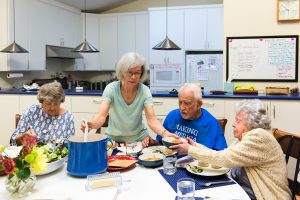
— Cohousing communities are not communes and there’s no sharing of income.
2
Which of these health specialists is LEAST likely to have an advance directive to document their end-of-life wishes?
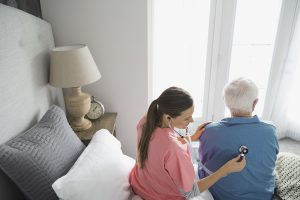
— A survey of nearly 900 hospice workers found that fewer than half — 44 percent — had completed advance directives. These are the folks who witness firsthand what happens when a dying person has no advance directive is in place.
3
New guidelines on the right to refuse nutrition and liquid at the end of life were designed primarily for:

— Dementia is a terminal illness, but even in the U.S. jurisdictions that allow medical aid-in-dying, it’s not a condition covered by such laws.
4
After analyzing data on urine tests, KHN found that 31 pain-specialist practices received what share of their income from such screenings?

— Urine testing has become particularly lucrative for doctors who operate their own labs.
5
What justification is often given for screening Medicare patients’ urine for drugs?

— All are viable rationales, though the sheer volume of tests and exorbitant costs involved raise red flags.
6
Compared with people who have a negative outlook on aging, seniors whose views of aging are primarily positive:

— When older adults hold negative stereotypes about aging, their health can suffer, studies show.
7
Fewer than half of breast cancer patients who are eligible for shorter spans of radiation treatment get them, primarily because:
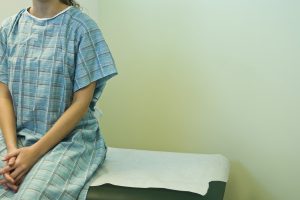
— Medical research has shown that a condensed, three-week radiation course works just as well as the longer regimen. The question is, is there a learning curve for physicians?
8
This year, there are more Medicare Advantage plans available for seniors to choose from than there have been since 2009. Which statement is FALSE?
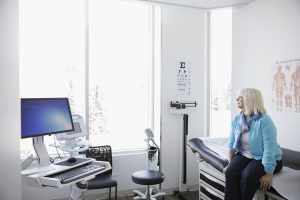
— Nearly 90 percent of Medicare Advantage plans currently available supply drug coverage.
9
A Kaiser Health News analysis found that care suffers in nursing homes where Medicaid is the dominant payer for residents. This is linked to the fact that:
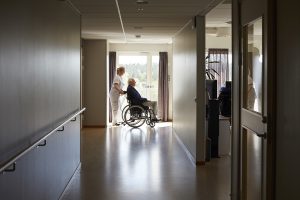
— It's a triple threat.
10
Which country has the highest average life expectancy (at birth)?

— Those born in Monaco have an average life expectancy of 89.4 years, about 10 years longer than those born in the U.S.
Follow-Up Exam: Test Your Wits On Aging
You Answered out of 10 Questions Correctly.
Question
Correct Response
1
Cohousing is a trend among older adults who eschew institutional living. The communities encourage sharing all of the following EXCEPT:
— Cohousing communities are not communes and there’s no sharing of income.
Sharing is encouraged within cohousing communities — a lawnmower, tools or an on-site laundromat, even guest quarters for out-of-town visitors. Homes are private, clustered near a common space where homeowners meet regularly to share meals and build a sense of community.
2
Which of these health specialists is LEAST likely to have an advance directive to document their end-of-life wishes?
— A survey of nearly 900 hospice workers found that fewer than half — 44 percent — had completed advance directives. These are the folks who witness firsthand what happens when a dying person has no advance directive is in place.
The share of hospice workers found to have advance directives in place (44 percent) was still higher than the roughly one-third of Americans overall who have one. Doctors and volunteers were most likely to have advance directives — almost 60 percent — compared with about 20 percent of certified nursing assistants.
3
New guidelines on the right to refuse nutrition and liquid at the end of life were designed primarily for:
— Dementia is a terminal illness, but even in the U.S. jurisdictions that allow medical aid-in-dying, it’s not a condition covered by such laws.
Nearly two dozen states have laws that address assisted feeding, including many that prohibit withdrawing oral food and fluids from dying people. Agencies in Washington and New York have developed documents that would let dementia patients refuse nutrition.
4
After analyzing data on urine tests, KHN found that 31 pain-specialist practices received what share of their income from such screenings?
— Urine testing has become particularly lucrative for doctors who operate their own labs.
A Kaiser Health News analysis, with assistance from researchers at the Mayo Clinic, found that spending on urine screens and related genetic tests quadrupled from 2011 to 2014 to an estimated $8.5 billion a year — more than the entire budget of the Environmental Protection Agency.
5
What justification is often given for screening Medicare patients’ urine for drugs?
— All are viable rationales, though the sheer volume of tests and exorbitant costs involved raise red flags.
Despite the recent deluge in urine screening, it's tough to pin down how often such tests reveal serious drug abuse — or suggest patients might be selling some of their medications instead of taking them. No matter the rationale, experts suggest it's hard to justify an $1,845 urine test.
6
Compared with people who have a negative outlook on aging, seniors whose views of aging are primarily positive:
— When older adults hold negative stereotypes about aging, their health can suffer, studies show.
Older adults who hold negative stereotypes about aging tend to walk slowly, experience memory problems and recover less fully from a fall or fracture.
7
Fewer than half of breast cancer patients who are eligible for shorter spans of radiation treatment get them, primarily because:
— Medical research has shown that a condensed, three-week radiation course works just as well as the longer regimen. The question is, is there a learning curve for physicians?
An exclusive analysis for Kaiser Health News found that only 48 percent of eligible breast cancer patients today get the shorter regimen, in spite of the additional costs and inconvenience of the longer course of treatment.
8
This year, there are more Medicare Advantage plans available for seniors to choose from than there have been since 2009. Which statement is FALSE?
— Nearly 90 percent of Medicare Advantage plans currently available supply drug coverage.
Despite the growing popularity of Medicare Advantage plans, several features — notably, the costs that older adults face in these plans and the extent to which members’ choice of doctors and hospitals is restricted — remain poorly understood.
9
A Kaiser Health News analysis found that care suffers in nursing homes where Medicaid is the dominant payer for residents. This is linked to the fact that:
— It's a triple threat.
These four charts, based on a Kaiser Health News analysis of ratings from the federal government’s Nursing Home Compare website, show how care suffers in nursing homes where Medicaid is the dominant payer for residents.
10
Which country has the highest average life expectancy (at birth)?
— Those born in Monaco have an average life expectancy of 89.4 years, about 10 years longer than those born in the U.S.
In 2016, based on National Center for Health Statistics, life expectancy at birth was 78.6 years for the total U.S. population. The World Factbook's figures estimate life expectancy for 2017. On that scale, Monaco rules at 89. 4. The United States ranks 43rd out of 224 countries examined, projecting an average life span of 80 at birth. In Japan, it's 85.3 years; in Iceland, 83.1.






